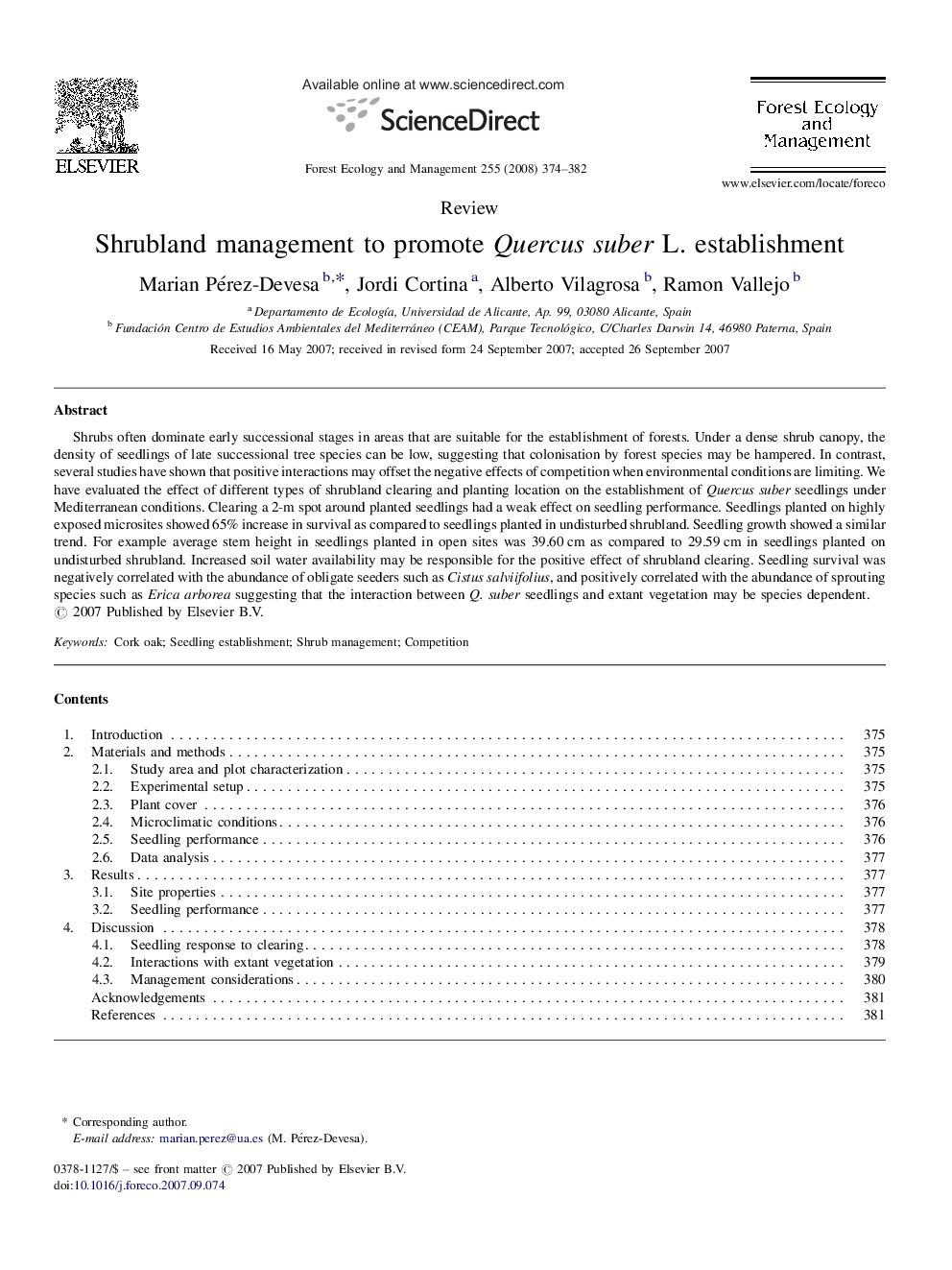| Article ID | Journal | Published Year | Pages | File Type |
|---|---|---|---|---|
| 89816 | Forest Ecology and Management | 2008 | 9 Pages |
Shrubs often dominate early successional stages in areas that are suitable for the establishment of forests. Under a dense shrub canopy, the density of seedlings of late successional tree species can be low, suggesting that colonisation by forest species may be hampered. In contrast, several studies have shown that positive interactions may offset the negative effects of competition when environmental conditions are limiting. We have evaluated the effect of different types of shrubland clearing and planting location on the establishment of Quercus suber seedlings under Mediterranean conditions. Clearing a 2-m spot around planted seedlings had a weak effect on seedling performance. Seedlings planted on highly exposed microsites showed 65% increase in survival as compared to seedlings planted in undisturbed shrubland. Seedling growth showed a similar trend. For example average stem height in seedlings planted in open sites was 39.60 cm as compared to 29.59 cm in seedlings planted on undisturbed shrubland. Increased soil water availability may be responsible for the positive effect of shrubland clearing. Seedling survival was negatively correlated with the abundance of obligate seeders such as Cistus salviifolius, and positively correlated with the abundance of sprouting species such as Erica arborea suggesting that the interaction between Q. suber seedlings and extant vegetation may be species dependent.
